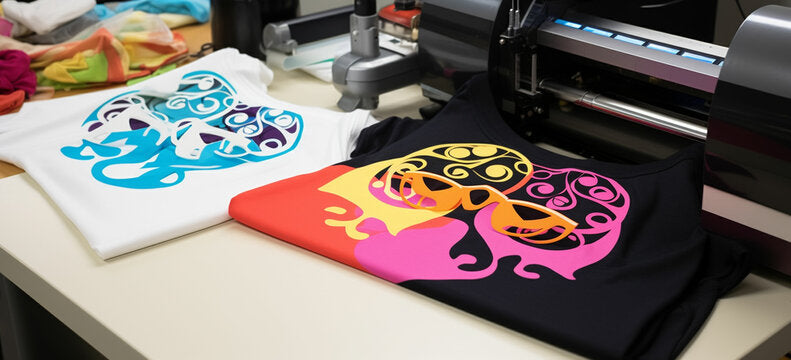
Ink it Right: 10 Essential Tips For First Time Sublimators
Share
Hey there, fellow sublimators! Are you feeling a little jittery about diving into the world of sublimation printing? Trust me, I've been there. As someone who's ventured into the exciting realm of sublimation, I know firsthand the mix of excitement and nervousness that comes with starting something new.
But fear not, my friend! I'm here to lend you a helping hand and share my personal journey, along with some expert tips, to make your transition into sublimation smoother and more enjoyable. From the highs of unleashing your creativity to the lows of facing unexpected challenges (like when my shrink wrap stuck to my tumbler because I didn't remove it immediately), I've experienced it all.
To help you embark on this exciting journey with confidence, I've compiled a list of essential tips for first-time sublimators. From basic techniques to expert advice, here's everything you need to know to kickstart your sublimation adventure.
1. Start with the Basics:
Begin your sublimation journey by starting with simple projects like plain white mugs or polyester t-shirts. This allows you to familiarize yourself with the process before tackling more complex items. Can you sublimate on dark fabric, yes. Would I recommend trying as your first project, no unless you are okay with a few messed up shirts. I currently have two shirts that are two sizes too big as pjs because I tried to sublimate on dark fabric before I did my research (i.e., learned about DTF).
2. Use High-Quality Images:
For optimal results, use high-resolution images with vibrant colors and clear details. Remember to mirror your designs if they contain text or elements that shouldn't be reversed. This is something that I still struggle with because I'm usually multitasking. Luckily, My Espon ET-2800 allows me to save settings so I have it checked all the time.
3. Test, Test, Test:
Experiment with different settings for temperature, pressure, and time on scrap materials before working on your final project. This helps you understand how your equipment behaves and achieve optimal results.
4. Follow Manufacturer's Guidelines:
Always refer to the instructions provided by the manufacturer of your sublimation printer, ink, paper, and blanks. They often include recommended settings specific to their products. All products are not the same and they have different temperatures and steps. Take the time to read the instructions and save yourself some money.
5. Prepare Your Substrates Properly:
Clean your blanks thoroughly with rubbing alcohol before applying your designs. This ensures better ink adhesion and prevents any dirt or oils from interfering with the sublimation process. I have heard some folks swear by soap and water, which is fine. Just make sure you clean your blank before sublimating.
6. Invest in Quality Materials:
Use high-quality sublimation ink, paper, and blanks for the best results. Cheaper materials may produce inferior prints and could damage your equipment over time. Actually, I need you to go a little further than that. Read the reviews. Look for videos of the product being used before you purchase it. Case in point, I purchased one sublimation ink because I heard so many good things about it. Once I got the ink though, I realized that I was going to have a time getting the ink into my printer. I had to use syringes and gloves and it was just a mess. Well I purchased a different type of ink the next time and their bottles came with an adapter that mimicked the Espon ink bottles. No gloves, no syringes, and most importantly no mess. I didn't see a single difference in the quality, but it made a huge difference for me.
7. Protect Your Workspace:
Place a protective sheet or parchment paper on your work surface to catch any stray ink or protect it from heat damage. This makes cleanup easier and prevents damage to your workspace. Make sure when you are sublimating you have teflon or butcher paper on top of your designs so you are protecting it.
8. Handle with Care:
Be gentle when handling sublimated items, especially when they're hot. Use heat-resistant gloves when removing items from the heat press and avoid touching the printed areas until they've cooled down.
9. Stay Organized:
Keep your workspace tidy and organized to prevent mistakes and save time. Label your materials and keep them within easy reach to streamline the sublimation process. I recently purchased these stackable bins from Amazon and they have been a godsend. I am able to easily reach items and see them without stressing out. My next project is a pegboard for my tools because I need them more accessible.
10. Have Fun and Be Creative:
In the end, please have fun and let your creativity fly. Sublimation is a versatile and exciting process that allows for endless possibilities. I have seen sublimated pillows, puzzles, and plates (hmm all starting with p lol). Don't be afraid to experiment with different substrates, designs, and techniques to unleash your creativity and create unique personalized items.

